
Für eine deutsche Übersetzung dieser Seite einfach die Brandenburger Flagge anklicken
 |
Click the Brandenburg Flag for a German translation Für eine deutsche Übersetzung dieser Seite einfach die Brandenburger Flagge anklicken |


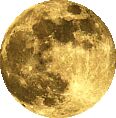 |
Road Trip March 2009Lick Observatory, CaliforniaC. Donald Shane Telescope |

|


 |
This site is part of our visit to Lick Observatory. Click the left turn sign to get back to the start page or the U-turn sign to get back to the road trips page. |

|

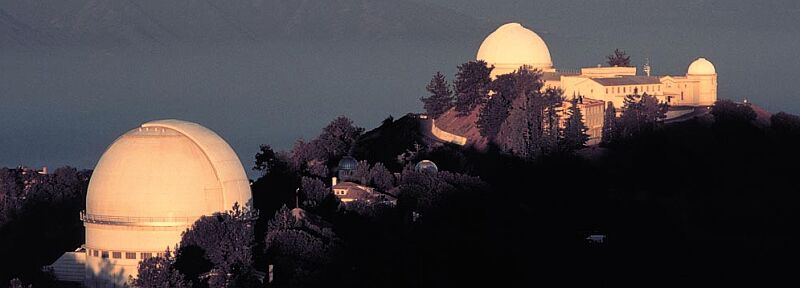 C. Donald Shane Telescope (left) and Lick Observatory in a picture borrowed from NASA's Jet Propulsion Lab.
C. Donald Shane Telescope (left) and Lick Observatory in a picture borrowed from NASA's Jet Propulsion Lab.
|

Lick Observatory was constructed between 1876 and 1887 and became the
world's first permanently occupied mountain-top observatory. It is named after James
Lick, carpenter, piano builder, hobby astronomer and - at the time of his death - the wealthiest man in California. Lick didn't live to see the completion of what was then the world's largest telescope. He died in 1876 in San Francisco. In 1887, a year before the observatory was finished, his body was moved to its final resting place, under the future home of the telescope that now bears his name.  We are not going to bore you with the entire history of the place, but if you are interested in details, you can check it out at Wikipedia. |
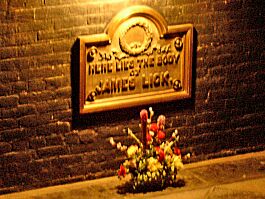 James Lick's tomb below the observatory
James Lick's tomb below the observatory |

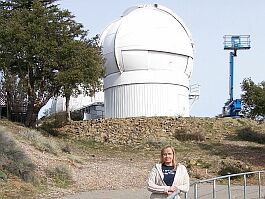 |
Today, there are a number of telescopes on top of Mount Hamilton. In the left picture you can see Judy with the C. Donald Shane Telescope and to the right is Volker with the Crossley Telescope (front) and the Great Lick Refractor. |
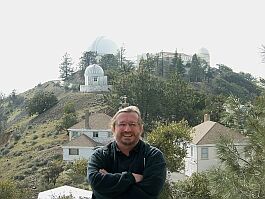 |


C. Donald Shane Telescope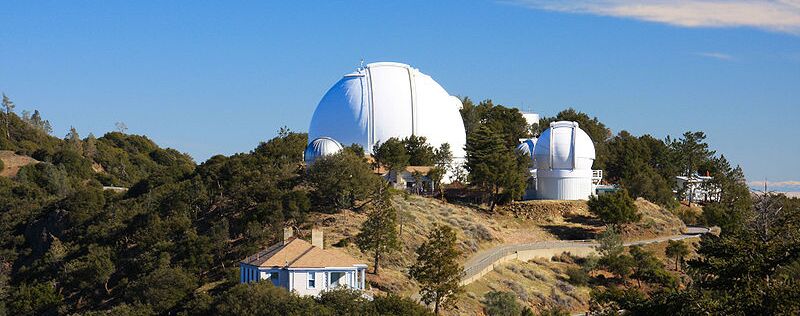 C. Donald Shane Telescope and Automated Planet Finder in a picture borrowed from Wikipedia.
C. Donald Shane Telescope and Automated Planet Finder in a picture borrowed from Wikipedia.
|
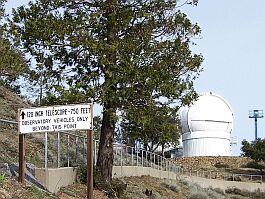 |
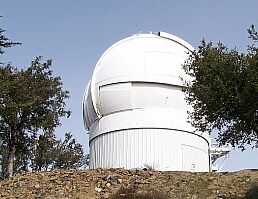 |
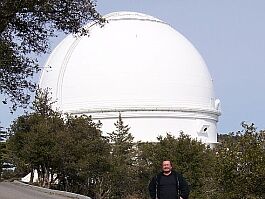
|
The two telescopes built in the 1800s, Lick and Crossley, were giants at the time, but by today's standards, they are somewhat antiquated. In 1959,
a state of the art 120 inch reflector was added to the telescopes at the observatory. The C. Donald Shane Telescope (top and right) is the 38
largest reflecting telescope in the world and the second largest in California.
Wikipedia has a lot more about this telescope.
 In 2008, the latest addition to the observatory, the Automated Planet Finder (below) was completed. It supports the observatory's current main task, the search for extrasolar planets. |
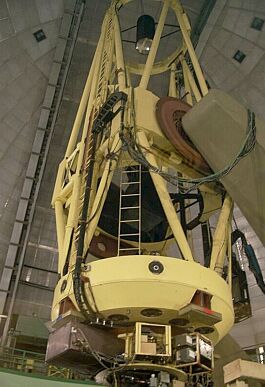
|
| Nature plus cutting edge technology: The Automated Planet Finder behind oak trees. |
Inside the C. Donald Shane dome: California's second biggest telescope. |



 |
Click the left turn sign to get back to the start page. Or click the right turn signal to move on to the main building and the Great Lick Refractor. |

|


 Back to Road Trip March 2009 |
 Back to Road Trips Main Page |
 Back to English Main Page |
 Back to Start Page |